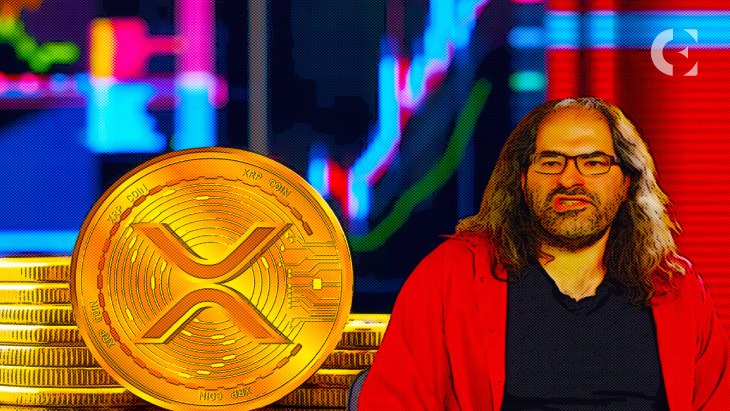- Ripple CTO responds to concerns about XRP’s centralization, DHS hacking, and his patent.
- David Schwartz maintains XRP ledger is open to everyone, not just the top 1%.
- Schwartz clarifies his patent’s relevance and Satoshi Nakamoto’s silence on XRP.
In a recent exchange on X (formerly Twitter), a crypto enthusiast, Wolf of Golden Street (WoGS), posed several intriguing questions to Ripple’s Chief Technology Officer, David Schwartz, regarding XRP and its design. Notably, the queries stemmed from the renowned Bitcoin maximalist Max Keiser calling XRP a centralized digital asset.
WoGS asked whether XRP truly empowers the top 1%, who appear to control the main XRP system. He also expressed concerns about potential hacking by the Department of Homeland Security (DHS) and questioned the centralized design of XRP as inferred from a patent. Besides, he pondered the timeline between Bitcoin’s emergence and Schwartz’s patent and inquired about any comments made by Satoshi Nakamoto regarding XRP.
David Schwartz responded to these queries in a detailed manner. Regarding the claim that XRP empowers the top 1%, he expressed uncertainty about what exactly that meant. He stressed that XRP’s ledger is open for anyone to use, promoting asset ownership and exchange transparency.
Regarding the potential for the DHS to hack XRP, Schwartz pointed out the public nature of XRP’s ledger and rules, making it unclear what hacking would entail. He acknowledged the possibility of bugs but noted the rapid resolution of such issues, making repeat hacks unlikely.
Schwartz dismissed the notion that his patent was connected to XRP’s centralized design. For context, Bitcoin maximalist Keiser recently unearthed a 32-year-old patent document of Ripple’s CTO to argue that XRP is centralized. Schwartz explained that his patent focused on a different concept that became less relevant over time.
Addressing the timeline question, Schwartz confirmed that his patent predated the emergence of Bitcoin (BTC). However, he clarified that the key innovation in BTC was its use of proof of work to solve the double spending problem, a feature unrelated to his patent. Finally, Schwartz noted that while Satoshi Nakamoto had commented on the original RipplePay system, there were no known comments from Satoshi regarding XRP. He highlighted that XRP represented a fundamental technical divergence from the original RipplePay system.
Disclaimer: The information presented in this article is for informational and educational purposes only. The article does not constitute financial advice or advice of any kind. Coin Edition is not responsible for any losses incurred as a result of the utilization of content, products, or services mentioned. Readers are advised to exercise caution before taking any action related to the company.







